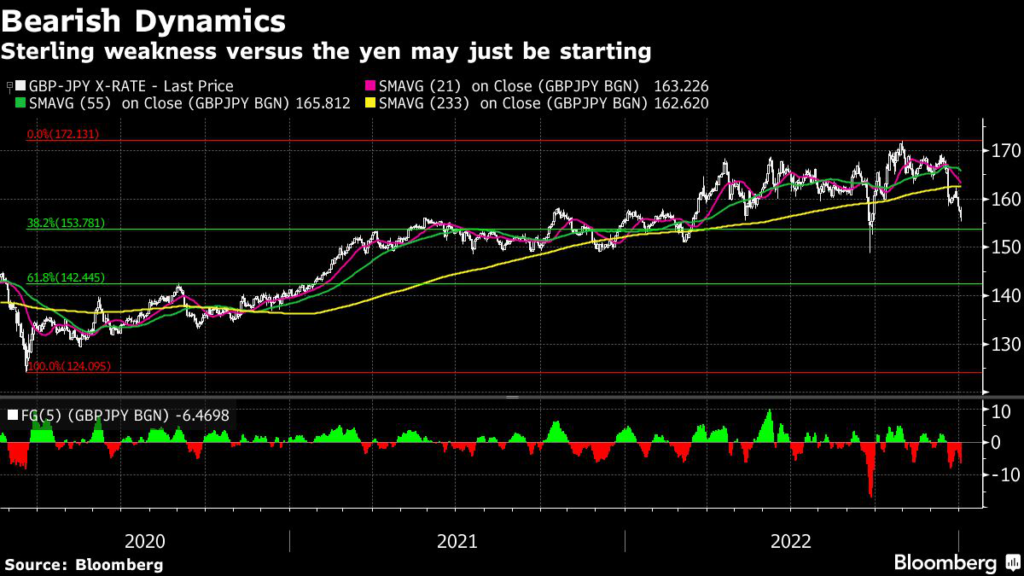Few major currencies stand to lose out as much from the yen’s comeback as the British pound this year.
(Bloomberg) — Few major currencies stand to lose out as much from the yen’s comeback as the British pound this year.
Investors have been dumping sterling on the view that a weakening UK economy will prevent the Bank of England from being as hawkish as its counterparts in the rest of the world. The difference is most pronounced when compared with Japan, where years of super-easy monetary may be finally coming to an end, propelling the yen to levels against the dollar last seen in June.
The pound’s yield advantage over the yen is already waning. The spread between 10-year UK and Japanese bond yields has narrowed about 10 basis points since the Bank of Japan shocked markets last month by doubling the cap on benchmark yields. Meantime, the yield gap between Japanese government bonds and US Treasuries was little changed, as was the spread to German bunds.
The pound has dropped 3% against the yen since the BOJ’s policy shift. That’s biggest slide among Group-of-10 currencies and underscores the challenges the currency — fresh off its worst year since the Brexit — still faces.
“I can’t see the pound outperforming the yen this year unless something extraordinary happens,” said Kit Juckes, chief FX strategist at Societe Generale SA, who sees room for the pound-yen pair to drop to 120. “The yen’s a buy against almost everything.”
The pound-yen pair slumped to 158 in late December, the lowest in nearly three months. Rabobank’s Senior FX Strategist Jane Foley said it could reach 150 if the BOJ starts raising interest rates, which she expects to happen in the second half of the year. The pair hasn’t closed below that level since late 2021 and currently trades 4% stronger.
“The pound has the capacity to soften on a broad-based view,” said Foley. “If at the same time we have the BOJ making noises that it can tweak its policy further, then we could see it fall versus the yen as well.”
While Japanese officials repeatedly said last month’s move shouldn’t be seen as a hawkish pivot, the yen rebounded strongly from the lows reached in previous months as investors saw it as a first step toward ending the zero interest-rate policy.
In the UK, meantime, officials may struggle to keep raising rates as economists forecast a more severe activity slowdown than in the US, Europe or Japan. Last month, the BOE raised rates by half a point as expected, but board members were divided three ways over the decision, pushing back against market expectations for the scale of future increases.
The pound fell 11% against the dollar last year as a combination of a reeling economy and surging inflation sent living standards crashing and fueled the worst industrial unrest in decades. While the currency erased losses triggered by former UK Prime Minister Liz Truss’ ill-received spending plans, known as ‘mini-budget’, it has failed to gain much further.
“GBP/JPY and UK-Japan yield curves could diverge meaningfully,” Saxo Bank FX analyst John Hardy wrote in a note last month.
More stories like this are available on bloomberg.com
©2023 Bloomberg L.P.










